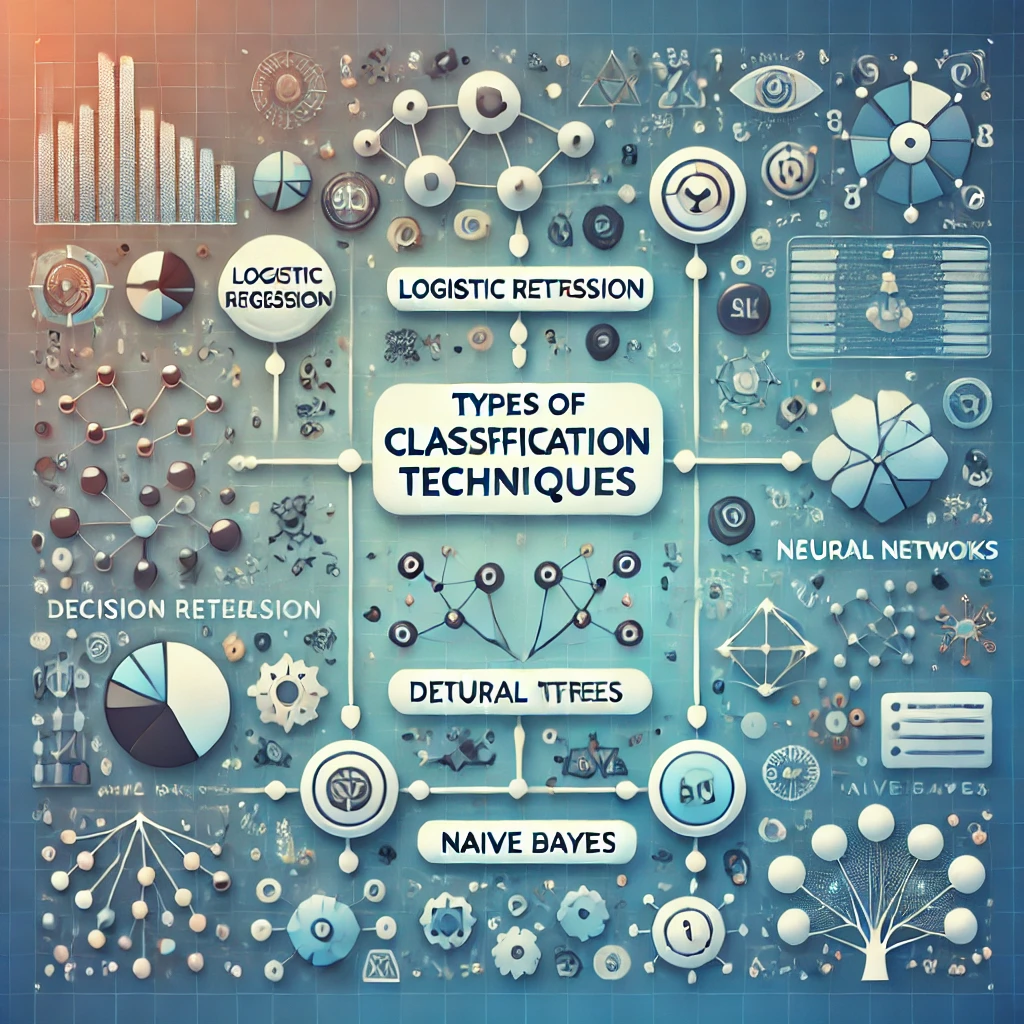Day-06 Types of Classification Techniques
 Mohit Meshram
Mohit Meshram
Classification techniques are the backbone of supervised learning, enabling models to predict categorical labels based on input data. Here's an overview of the most common types of classification techniques, with easy-to-understand explanations and examples.
1. Logistic Regression
Despite the name, logistic regression is used for classification, not regression. It works by estimating the probability that a given input belongs to a particular class. If the probability exceeds a threshold (usually 0.5), the model classifies the input into one category; otherwise, it classifies it into another.
Example: Predicting whether a student will pass or fail an exam based on their study hours.
Use Case: Binary classification problems (e.g., Yes/No, True/False).
2. Decision Trees
Decision trees resemble a flowchart, where each internal node represents a test on an attribute (e.g., "Is the pet small?"), each branch represents the outcome of the test, and each leaf node represents a class label (e.g., Cat or Dog).
Example: Deciding whether to carry an umbrella:
Is it raining? Yes → Carry an umbrella.
No → Is it cloudy? Yes → Carry an umbrella. Otherwise, don’t.
Use Case: Problems with multiple classes, as it clearly outlines decision paths.
3. Random Forest
A random forest is an ensemble of decision trees. Instead of relying on a single tree, it aggregates the results of multiple trees to improve accuracy and reduce the risk of overfitting.
Example: Predicting whether a loan application will be approved or denied based on applicant details.
Use Case: Complex classification tasks with higher accuracy needs.
4. Support Vector Machines (SVM)
SVMs classify data by finding the optimal boundary (hyperplane) that separates different classes. It works well in high-dimensional spaces and is effective for both linear and non-linear data.
Example: Categorizing fruits into apples or bananas based on features like size and color.
Use Case: Scenarios where data can be clearly separated into distinct groups.
5. k-Nearest Neighbors (k-NN)
This is a simple, instance-based learning algorithm that classifies a data point based on the majority class of its closest neighbors.
Example: Classifying a new fruit as an apple or orange by comparing it with the most similar fruits in the dataset.
Use Case: Applications like recommendation systems and image recognition.
6. Naive Bayes
This technique is based on Bayes’ theorem and assumes that all features are independent of each other (hence the term "naive"). It calculates the probability of a data point belonging to a specific class.
Example: Email spam detection based on the frequency of certain words.
Use Case: Text classification and natural language processing tasks.
7. Neural Networks
Inspired by the human brain, neural networks consist of layers of interconnected nodes (neurons). These networks can learn complex patterns in data to classify it accurately.
Example: Identifying handwritten digits from 0 to 9.
Use Case: Image recognition, voice classification, and other advanced tasks requiring deep learning.
8. Gradient Boosting (e.g., XGBoost, LightGBM)
Gradient boosting combines multiple weak classifiers (usually decision trees) to create a strong model. Each tree corrects the errors of the previous ones.
Example: Predicting customer churn in a subscription-based business.
Use Case: High-stakes applications where accuracy is critical, such as fraud detection.
How to Choose the Right Technique?
The choice of technique depends on factors like:
Data Size: SVMs and neural networks work well with large datasets.
Complexity: Simple problems might only require k-NN or logistic regression.
Accuracy Needs: Random forests or gradient boosting often perform better for complex tasks.
Computational Power: Neural networks and ensemble methods may need more resources.
Conclusion
Classification techniques provide the foundation for many applications in machine learning. From basic methods like logistic regression to advanced algorithms like neural networks, each technique has its strengths and is suited to different types of problems. Whether you're detecting spam emails, diagnosing diseases, or building recommendation systems, understanding these techniques helps you choose the right tool for the job.
Subscribe to my newsletter
Read articles from Mohit Meshram directly inside your inbox. Subscribe to the newsletter, and don't miss out.
Written by
